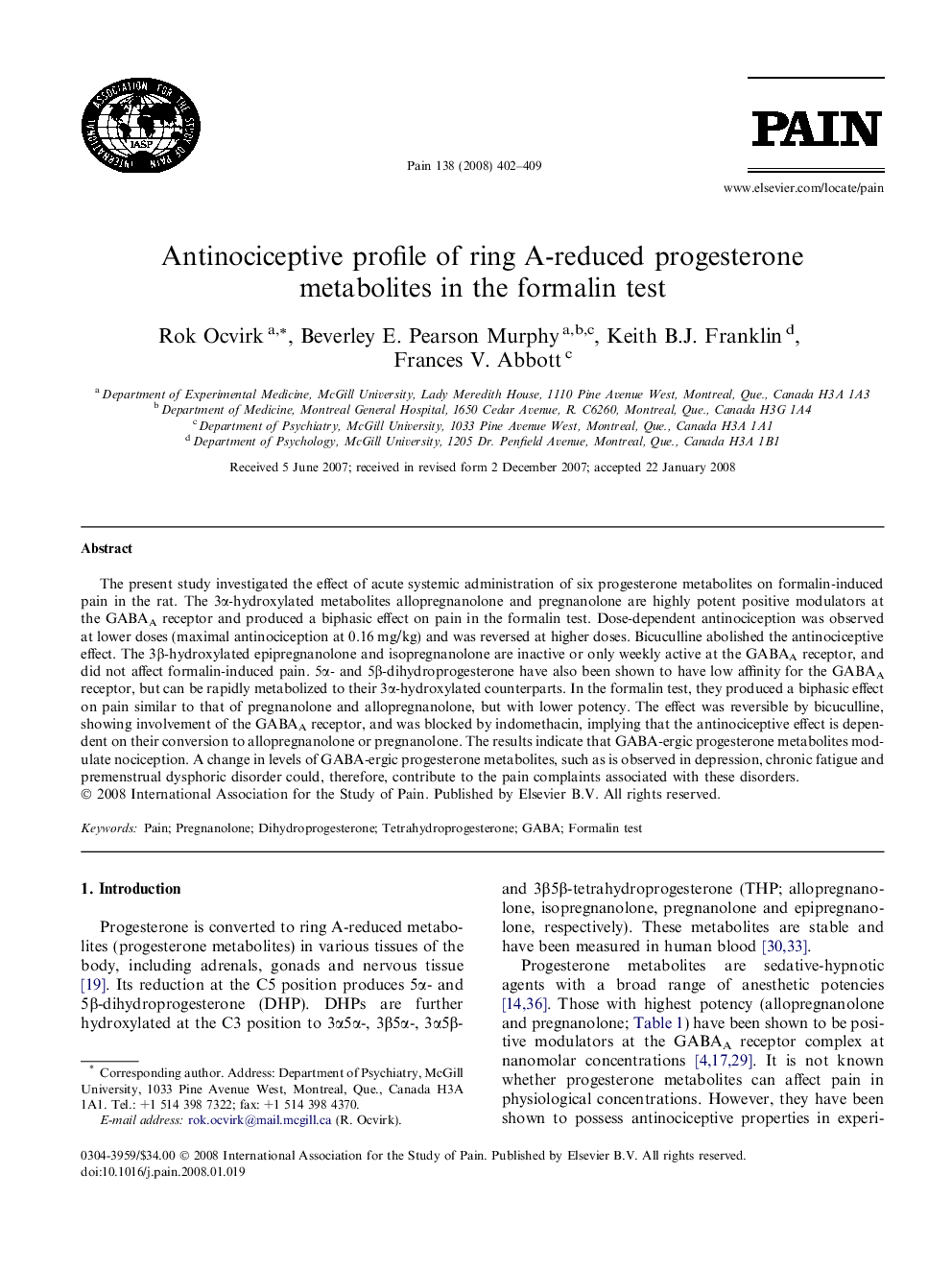| کد مقاله | کد نشریه | سال انتشار | مقاله انگلیسی | نسخه تمام متن |
|---|---|---|---|---|
| 914871 | 918420 | 2008 | 8 صفحه PDF | دانلود رایگان |
عنوان انگلیسی مقاله ISI
Antinociceptive profile of ring A-reduced progesterone metabolites in the formalin test
دانلود مقاله + سفارش ترجمه
دانلود مقاله ISI انگلیسی
رایگان برای ایرانیان
کلمات کلیدی
موضوعات مرتبط
علوم زیستی و بیوفناوری
علم عصب شناسی
علوم اعصاب سلولی و مولکولی
پیش نمایش صفحه اول مقاله

چکیده انگلیسی
The present study investigated the effect of acute systemic administration of six progesterone metabolites on formalin-induced pain in the rat. The 3α-hydroxylated metabolites allopregnanolone and pregnanolone are highly potent positive modulators at the GABAA receptor and produced a biphasic effect on pain in the formalin test. Dose-dependent antinociception was observed at lower doses (maximal antinociception at 0.16 mg/kg) and was reversed at higher doses. Bicuculline abolished the antinociceptive effect. The 3β-hydroxylated epipregnanolone and isopregnanolone are inactive or only weekly active at the GABAA receptor, and did not affect formalin-induced pain. 5α- and 5β-dihydroprogesterone have also been shown to have low affinity for the GABAA receptor, but can be rapidly metabolized to their 3α-hydroxylated counterparts. In the formalin test, they produced a biphasic effect on pain similar to that of pregnanolone and allopregnanolone, but with lower potency. The effect was reversible by bicuculline, showing involvement of the GABAA receptor, and was blocked by indomethacin, implying that the antinociceptive effect is dependent on their conversion to allopregnanolone or pregnanolone. The results indicate that GABA-ergic progesterone metabolites modulate nociception. A change in levels of GABA-ergic progesterone metabolites, such as is observed in depression, chronic fatigue and premenstrual dysphoric disorder could, therefore, contribute to the pain complaints associated with these disorders.
ناشر
Database: Elsevier - ScienceDirect (ساینس دایرکت)
Journal: PAIN - Volume 138, Issue 2, 31 August 2008, Pages 402-409
Journal: PAIN - Volume 138, Issue 2, 31 August 2008, Pages 402-409
نویسندگان
Rok Ocvirk, Beverley E. Pearson Murphy, Keith B.J. Franklin, Frances V. Abbott,